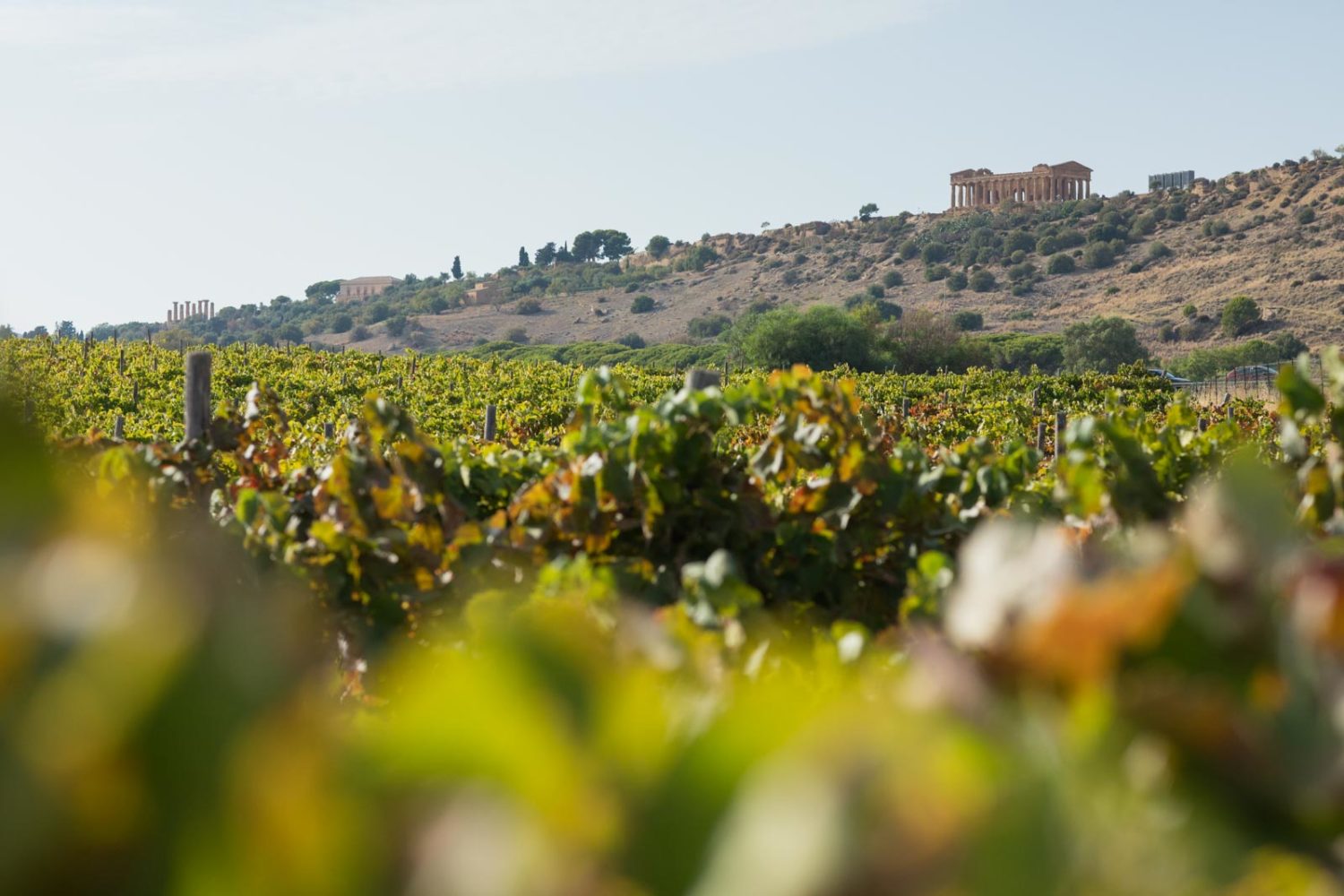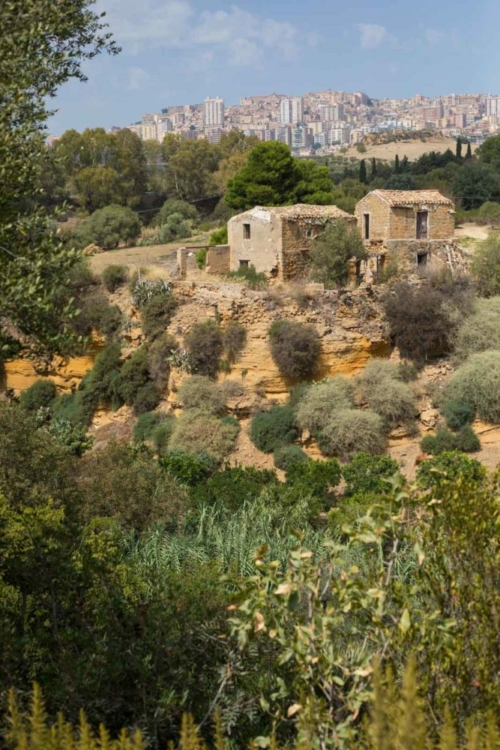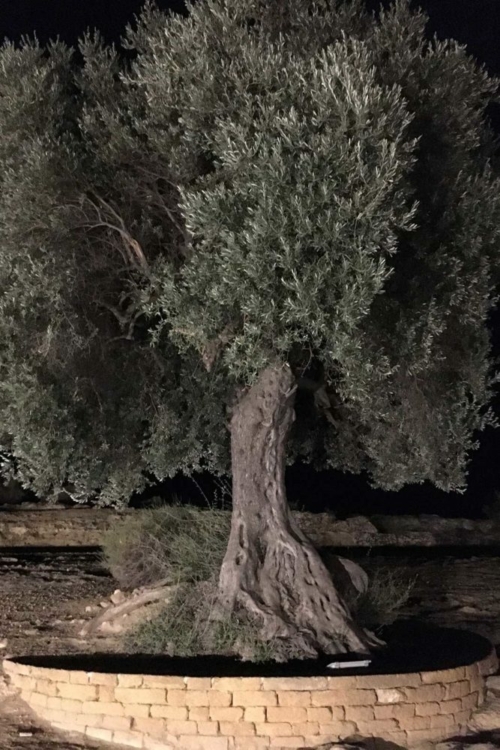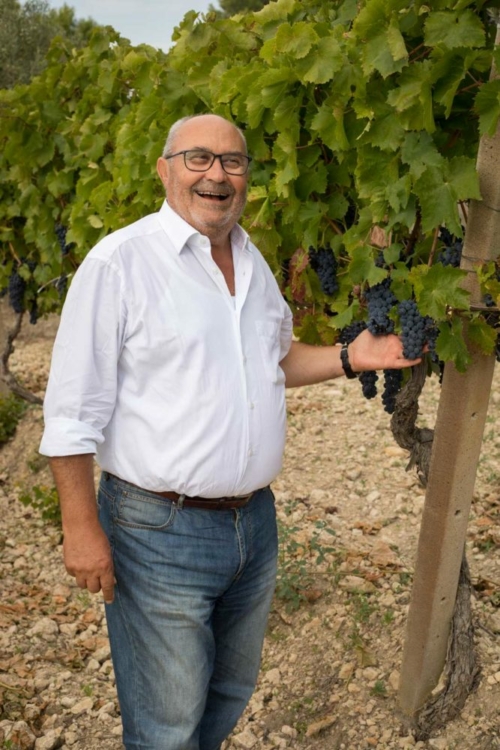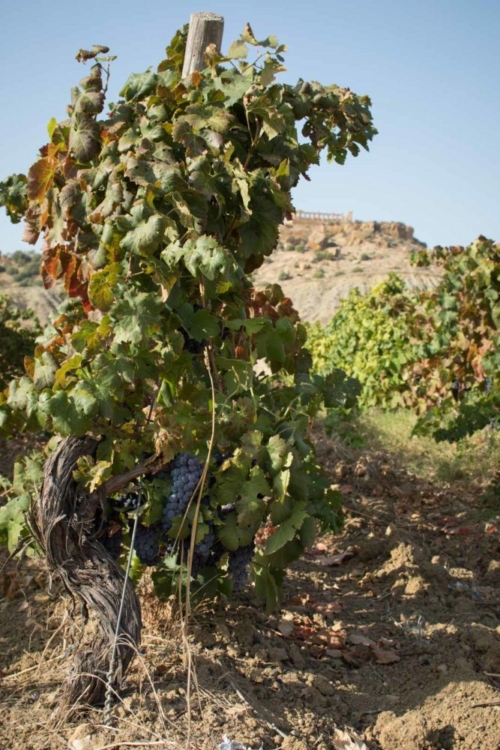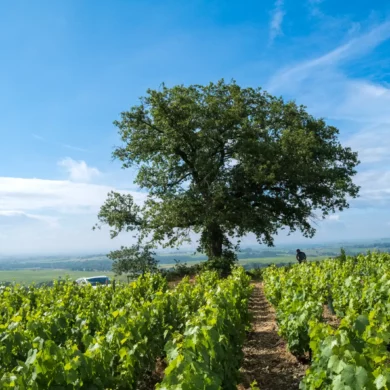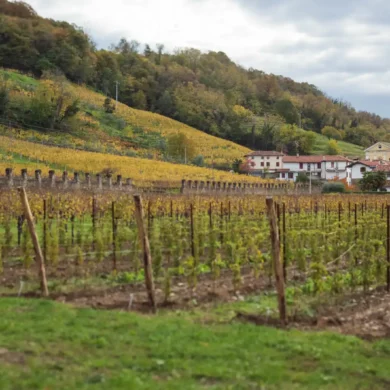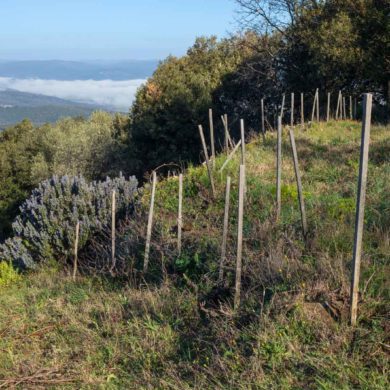Baked and exhausted, the vines of the Diodoros vineyard looked like they had been interrogated by the sun. The fading leaves had long spilled their secrets; their crisp edges suggested that there was nothing left to offer.
While most of the grapes were gone, I was able to find a few that had been passed over by the discerning fingers of the harvesters. So I crouched down and photographed them. I had never seen a composition like this before: purple grapes in the foreground, a 2,500-year-old Greek temple on a bluff above.
I had yet to taste Diodoros’ eponymous wine, a rich Nero d’Avola blend from CVA Canicattì, a co-op winery of 300-plus winegrowers. But in the intense September heat, I was interested in photos first, cold water second. The wine could wait until dinner.
Ancient is Relative
Sicily’s history cannot be cleanly summarized in a paragraph. As the Mediterranean Sea’s largest island, it has always been a crossroads of cultures, and a target for conquest. Populations from across the region have settled and left their mark, only to be defeated by the next set of conquerers. Because of this, “Sicily is not Italy” is a mantra heard often on the island.
While the Phoenicians were settling Palermo on the northwest coast in the 8th century BC, the Greeks were colonizing Catania on the eastern shore. Eventually, the Greeks moved across southern Sicily. They built the city of Akragas on what is now Agrigento around 582 BC. The city quickly became an economic juggernaut for Magna Graecia, embodied by a series of temples located on the defensible high ground of the city. Today, the Valley of Temples is an UNESCO World Heritage Site because it holds one of the greatest, most intact collections of ancient Greek art and architecture in the world.
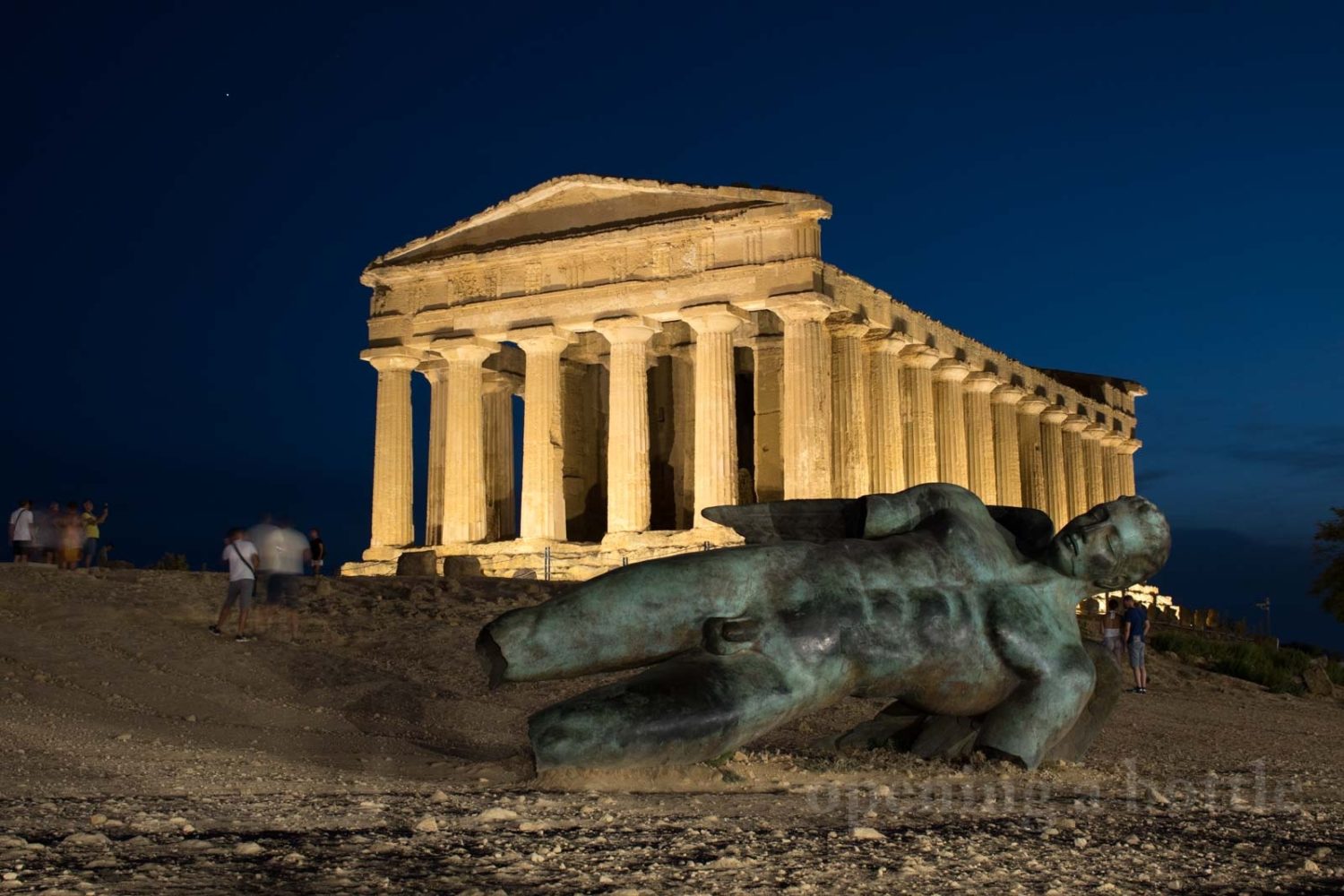
Standing underneath the temples in the vineyard — and later, walking among them at night — I could not help but ponder their mysteries. The chief conundrum was how they fended off decay over so many years. At nearly 2,500 years of age, the Temple of Concordia is sturdier than the 60-year-old interstate viaduct that runs through my hometown of Denver. The Temple of Juno was only broken apart because much of its stone had been pillaged over the centuries.
Nightfall proved to be the best time of day to stroll the ancient city grounds. The stones underfoot still radiated the September heat, but the air was cool. And the massive temples were dramatically textured by artificial light and shadow. As equally striking as the temples were the ancient olive trees. Dating back to nearly 1,000 years, these twisted yet sturdy trees still bare fruit. I thought about the oceans of olive oil a single tree could produce in 1,000 years, but I just couldn’t comprehend it.
And that brings us back to the Diodoros project, because it is more than just a local co-op producing wine in the shadow of some temples.
Wine as a Single Thread of Heritage
For some, the UNESCO World Heritage Sites are merely a tempting list to be conquered. At Agrigento, you can certainly check the Valley of Temples off your list in an hour’s time. Climb the hill. Take a selfie in front of the Temple of Concordia. Walk back to the parking lot. Done.
But what does it say about us as a civilization if our monuments are merely celebrated as lifeless relics trapped in a timeless vortex? What if the grounds of the monument were reinstated to some of their original use as well? Would that make the nexus of history and culture more visible?
I recalled climbing into the ruins of Mesa Verde in Colorado and walking beneath Segovia’s aqueduct in Spain. They were ingenious relics of the past, but strangely divorced from reality because of their present-day uselessness.
Upon closer inspection, the Valley of Temples is at least partially a productive park: a fertile ground for active culture through farming.
Take for instance the sprawling Garden of the Kolymbetra, an archaeological jewel in its own right that is largely hidden from view beneath the ruins. In 480 BC, Agrigento’s ruler — Theron of Acragas — forced the defeated Carthaginians to dig a vast water-cachement system beneath the temples. The ingenious system lead to a wetland fit for aquaculture.
Fifteen centuries later — after periods of domination by the Romans, the Vandals, the Goths and the Byzantines — Arab settlers would modify the system to foster orchards. Since that time, the garden’s orange and olive trees have been a delicious, living reminder of Sicily’s complex collision of cultures.
But to the leadership of the archaeological park, the Garden of Kolymbetra was only telling part of the story. Animal husbandry, olive oil and wine have also been a crucial part of Agrigento’s history, but development had pushed them far away from the temples. So they decided to reunite the past with the present by partnering with local agricultural companies, CVA Canicattì being one.
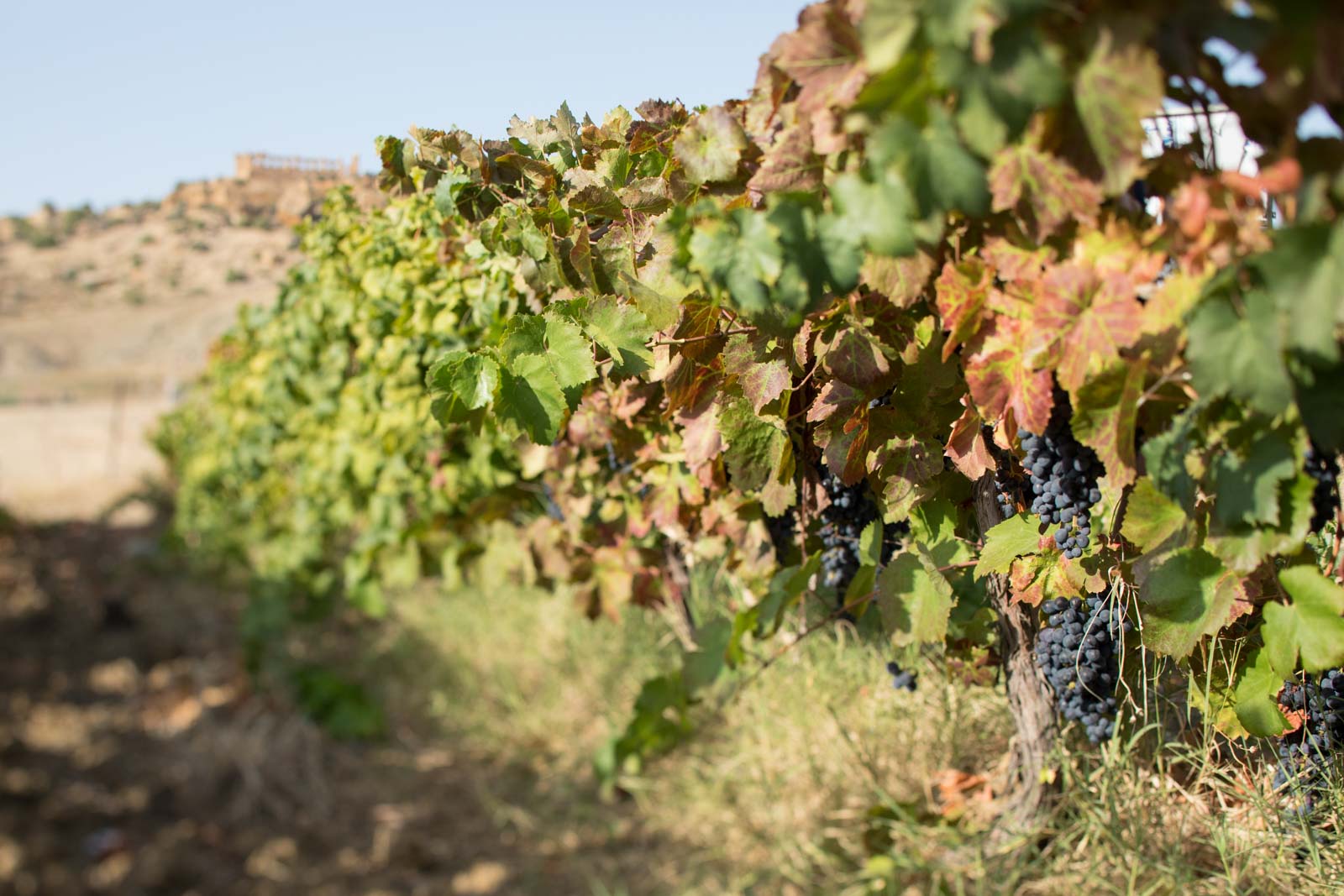
Barely visible in the inky night, I could see a small goat farm tucked against the rock face beneath the temples. Here, the rare and endangered girgentana breed of goat — defined by its spectacular helix-like horns — is given sanctuary and raised for milk production. Originally brought to Sicily by Arabs in the 9th century, the goats are believed to be descendants of Tibetan goats, and the milk and cheese they make is renowned for its balance of protein and fat.
And those staggeringly ancient olive trees? They are harvested by Val Paradiso, a local company specializing in organic olive oil.
Together, the wine from the vineyard and olive oil from the trees are sold under the same brand — Diodoros. The bottles are defined by the same distinctive, vertical-striped label. Some of the proceeds from the products go back to preservation efforts in the park, but the biggest aim of the project is to export the products and raise awareness of the temples on a global scale.
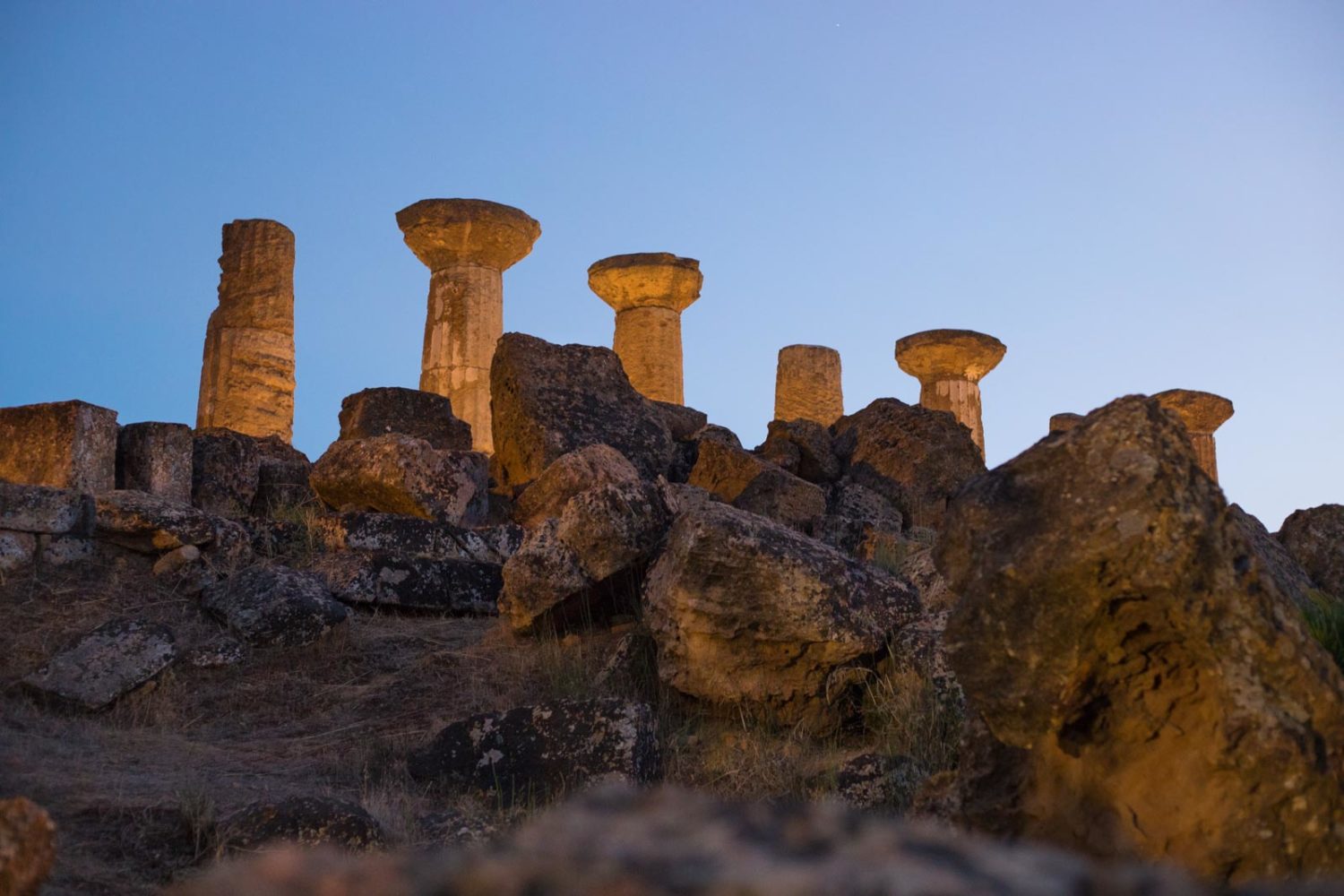
There Are No Shadows
Back in the vineyard, my shoes were covered in the loose dust of Diodoros’ sandy-clay soil. There is a two-lane highway that separates the vineyard from the temples. Every 20th vehicle is a motorcoach bus delivering tourists, and I was fairly certain none of them noticed the vines.
When you sip Nero d’Avola, you often come away with a sensation of ripeness. This is a warm-climate grape, and its fully developed aromas and textures speak to the heat.
“The quantity of sun in southern Sicily makes a big difference for Nero d’Avola,” Salvatore Messina told me as we examined some of the vines. He is CVA Canicattì’s export manager. “It is a grape that loves sun, and that’s all we have in Diodoros: sun!”
Oddly enough, the vineyard’s other grapes — small parcels of Nerello Mascalese and Nerello Cappuccio — are better known for loving the cool-climate and high altitude of Etna. But even here in the heat, these grapes have something to say. Used in tandem as 10% of the Diodoros blend, they soften Nero d’Avola’s rigid backbone, making the wine dance a little more loosely on the palate.
Earlier in the day, I had met CVA Canicattì’s president, Giovanni Greco. Our time was limited, but not as limited as my Italian: what questions I asked him — through Salvatore as a translator — were mainly about the three-ring circus of managing a co-operative of wine growers (a separate article entirely, which I’ve published as well). Regrettably, I missed my chance to ask him about his ambitions with Diodoros.
However, his answer would have likely been similar to a quote I found from him. The book Sicilia: The Island and the Mediterranean Stories of Loves and Wines by Andrea Zanfi profiles many of Sicily’s top winemakers in beautiful, photographic detail. On CVA Canicattì’s spread, Giovanni describes a Sicily “populated by countless, colorful and always-troubled souls.”
“(Sicily) is everything,” he notes in the translated text. “It is abundance, and that abundance — if it were exploited — could create wealth for all through our Sicilian entrepreneurship.”
He goes on to suggest that the Sicilian winemaking industry has a lot of work to do, and it should start by looking to the past. “We could obtain much greater results if we would only keep in mind the 2,500 years that make up our wine history, and thus recover the role that is ours. Our lands, planted with vines for two millenia, should make us the benchmark of great wines.”
It would seem that Diodoros is just such a wine, made in the shadows of ancient Greek history — that is, if there was any shade in the vineyard at all.
2014 CVA Canicattì Diodoros
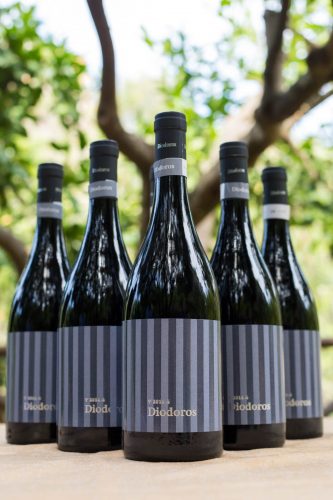 Sicilia IGT, Italy
Sicilia IGT, Italy
Grapes: Nero d’Avola (90%), Nerello Mascalese and Nerello Cappuccio (10%)
Alcohol: 14%
Rating: ★★★★ 3/4 (out of five)
Food Friendliness: Selective
Value: As expected
Tasting Notes: A highly aromatic, muscular yet soulful wine from one of Sicily’s most distinctive vineyards. Inky in color. The aromas of the wine bring to mind purple fruit, walnuts, black flowers, peppercorns and savory traits similar to cured meats. On the palate, the wine is a true shapeshifter: flexing its muscles at first sip, then showing grace and elegance on the finish. The tannins seem to lie in wait, too: hidden one minute, throwing punches the next, but never out of balance. A fine wine if you like them strong.
Serving Suggestion: The brawn and power of this wine needs the fat and juiciness of a burger to be appropriately tamed.
Find a bottle of CVA Canicattì Diodoros
Note: My travels to Sicily were partially funded by CVA Canicattì as well as a group of other Sicilian wineries and a special fund created by the European Union. However, I retained all editorial decisions. Learn more about my editorial policy.
